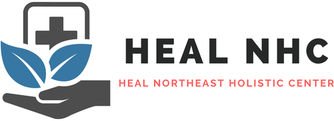Healing Tooth Extraction: Do’s and Don’ts For Faster Recovery
Does your condition require tooth extraction? What do you need to know about the healing tooth extraction cycle? If your tooth is severely damaged, your dentist may recommend this procedure. As stated by the ‘Digital Dental Surgery Sydney’ practitioners, following your dentist’s instructions are very necessary to have a successful treatment.
Why A Tooth Extraction Is Needed?
Tooth extractions are the complete removal of a tooth from the mouth. Individuals may need a tooth extraction for various reasons. Some examples incorporate:
- gum disease
- dental cavities
- dental infections
- trauma or injury to the tooth or encompassing bone
- wisdom teeth difficulties
- preparation for dental braces, if you have crowded teeth
- preparation for a dental prosthesis
- baby teeth not dropping out at a suitable age
A dental surgeon will do the procedure in the clinic and afterwards provide some guidelines for the healing tooth extraction.
Kinds of Tooth Extraction
The correct kind of tooth extraction relies upon the tooth’s figure, size, situation, and area in the mouth. The dental surgeon may classify the procedure as simple or surgical. A simple tooth extraction includes a tooth that is noticeable above the gums and that a dentist can eliminate in one piece. A surgical procedure is more complex and includes the expulsion of gum tissue, bone, or both. The surgeon may have to eliminate the tooth in pieces.
Wisdom teeth are the last to emerge and typically the main reason that requires tooth extraction. An impacted wisdom tooth implies that it has not entirely risen out of the gums. However, wisdom tooth removal is a typical procedure in oral surgery.
How Long Does the Healing Time After Tooth Extraction?
You can expect pain and some bleeding for as long as 24 hours after the procedure. You must also avoid doing an activity that can disturb the blood clot that develops in the socket where your tooth used to be.
Most of the time, the pain inclines to diminish after the third day. Granulation tissue forms after about a week to ten days. This phase secures the extraction site until the bone can form there. You will probably have a subsequent appointment following two weeks for your dentist to evaluate your healing time and guarantee you are on your way to an effective recovery.
In case you have an impacted wisdom tooth, the healing tooth extraction period may take longer. According to the American Association of Oral and Maxillofacial Surgeons, it could last several weeks to recover from a wisdom tooth extraction completely.
Aftercare for a Tooth Extraction
Aftercare for tooth extraction can differ slightly depending on a couple of variables. These incorporate which tooth the dentist removed, as certain teeth have deeper roots than others and take more time to heal. Nevertheless, most patients find that pain diminishes after around three days. One of the most significant parts of aftercare is keeping up the blood clot that builds up in the socket where the tooth used to be. Considering this blood clot is essential to the healing cycle, it forestalls painful problems like dry socket.
Do’s and Don’ts
Most aftercare in the first few days after tooth extraction centers around permitting a blood clot to develop and generally, caring for the mouth.
As some professionals note, low-level bleeding for as long as 24 hours after the procedure is entirely normal. However, continuous bleeding after this phase needs treatment.
Do’s
Get a lot of rest: Expect to rest for at least the first 24 hours following the extraction.
Change the dressing as needed: It is imperative to leave the primary dressing in the mouth for at least a couple of hours to let the clot develop. After this point, it is okay to change the dressing as frequently as needed.
Use pain relievers: Over-the-counter medicine may help diminish pain and aggravation.
Apply cold compresses: Applying a towel-wrapped bag of ice or an ice pack on the affected part for 10–20 minutes at a time may aid to numb the pain.
Raise the head: When resting, use additional pillows to lift the head. Lying too level may permit blood to pool in the head and extend healing time.
Use any prescribed medicine by your dentist: The dentist may offer prescription medications for complex procedures. It is imperative to finish the entire course of treatment.
Don’ts
Do not rinse: It is also crucial for healing tooth extraction to avoid swishing, flushing, or gargling anything in the mouth while the affected part is still clotting. These activities may remove any clot that is creating and influence the recovery period.
Avoid using straws: Applying a straw gives a great deal of tension to the healing tooth extraction site, which can simply remove the blood clot.
Avoid spitting: Spitting likewise makes pressure in the mouth, which may dislodge the blood clot.
Abstain from cleaning out the nose or sneezing: If the dentist eliminated a tooth from the upper portion of the mouth, cleaning out the nose or sneezing can pressure the head. This condition may dislodge the forming of the blood clot. That is why it is important to abstain from blowing the nose if possible.
Do not smoke: Tobacco use or smoking can make a similar pressure in the mouth as using a straw. While it is ideal to abstain from smoking during the whole healing cycle, it is necessary not to use any tobacco product during the first couple of days as the blood clot develops.
Additional Tips
When the clot is formed, it is necessary to keep it securely in place and adhere to some additional means for oral hygiene to avoid various problems.
Saline washes
Once the clot is safely in place, softly wash the mouth using a warm saline solution or a spot of salt in warm water. This blend helps eliminate bacteria in the mouth, which may avoid infections as the mouth recovers.
Brush and floss your teeth
Usual brushing and flossing is essential but takes care to stay away from the affected area. The dentist’s prescription, like any medicated mouthwash and the saline solution, should be sufficient to clean this area.
Eat soft foods
It is necessary to eat soft foods that do not need a ton of biting throughout the whole healing process. Since this food can avoid getting into the empty socket, you can eat soups, applesauce, yogurt, and similar foods. It would also be best if you stayed away from chips, hard toast, and foods containing seeds.
Proper aftercare is important to progress clotting and secures the extraction site during the healing cycle. Generally, simple extraction should recover within 7 to 10 days. If you encounter worsening symptoms after a tooth extraction, visit your dentist right away. We suggest visiting Casey Dentists’ clinic in Townsville if you need quality dental care at an affordable price.

